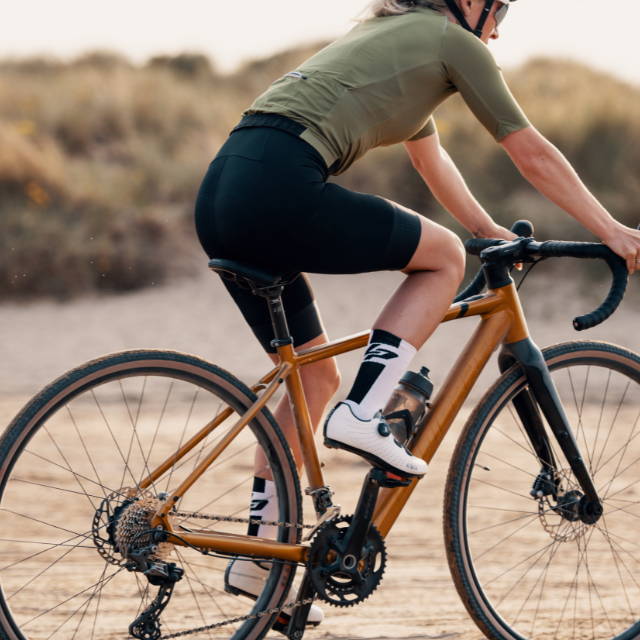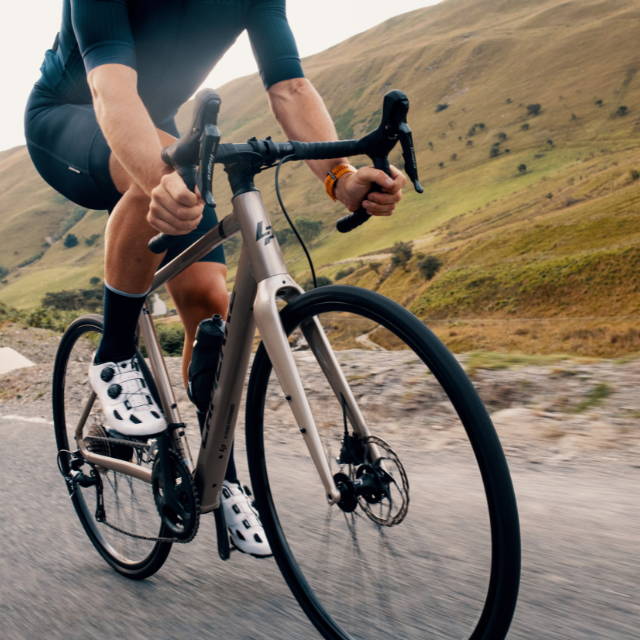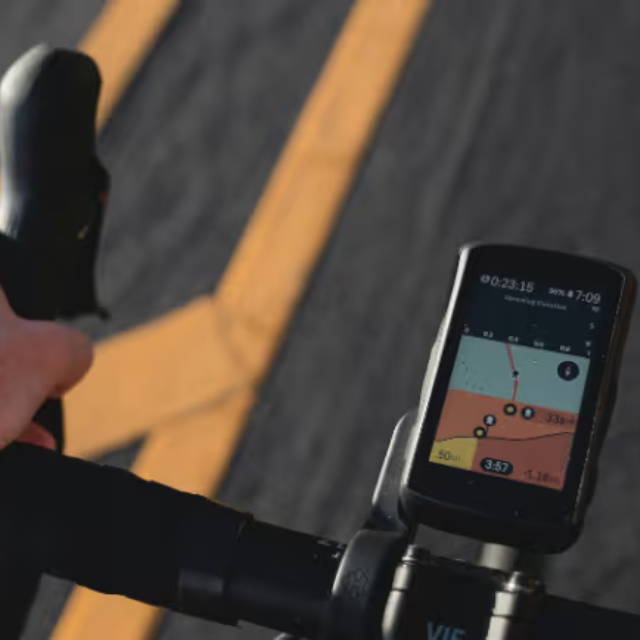Road Bike Tire Guide: Width, Pressure & Tubeless
Written by: Rémy Rossi | February 2, 2024 | Time to read 8 min
Let’s make sense of the seemingly endless possibilities when it comes to road bike tires and pressures.

More about the Author: Remy Rossi
Rémy Rossi is a bike writer, mechanic, and educator who got his start in community-based bike shops and co-ops. With a decade in the industry, he still wrenches on bikes when he can and plays bike polo on a fixie.

In this guide, I’ll take my best shot at explaining the essential information when it comes to choosing the right road e-Bike tire and pressure, without going overboard. If you want to geek out even more, let’s go on a café ride sometime— give me some caffeine and I’ll really talk your ear off.
👋 Interested about Upway?
It’s all about speed… or is it?
The past several years have witnessed the relative ballooning of road bike tire widths, paired with lower pressures. Scientific studies showed that slightly wider tires (around 28mm) actually had a lower rolling resistance than traditional 25mm or narrow 23mm tires (they even used scrawny 19mm tires back in the day). These wider tires offer more grip, control, and cushion— plus, they’re actually more efficient for racers.
Rider comfort

As you decide on which road tire is right for you, consider what you actually want from the tire. Speed? Comfort? A new set of tires is arguably the most significant (and affordable) road bike upgrade you can do, so it’s worth doing your research before changing your tires.
Road tire size and diameter

You may also see a tire size listed as 25-622. That 622 number is another way of specifying that it's a road tire— the inside diameter of a tire from bead to bead is closer to 622mm. It’s confusing (you can blame the French) but just make sure to stay away from tires listed as 650c or 571mm— those are smaller-diameter wheels, though they can be used on some gravel bikes. The same is true for outdated 27” (ISO size 630) that won’t properly fit on modern rims.
Road tire width
Road tire pressure

Higher pressures make for a firmer tire that rolls fast over smooth surfaces like pavement, but it won’t be too comfortable over bumps. Also, having so much compacted air helps prevent pinch flats if you hit an unexpected rock or pothole.
Lower pressures also cause the tire to be more malleable and conform to the riding surface, soaking up road imperfections and bumps. This is more comfortable for the rider and offers more control on loose, rough terrain like gravel or cobblestones. In these types of terrains, lowering the tire pressure can actually allow you to ride faster and more controlled— all without breaking your back on rock-hard tires. But too low of pressure and you risk pinch flats or damaging your rim.
Look at the sidewall of your tire for the manufacturer’s pressure range. It’ll be a wide range so you’ll have options. The “bar” metric is used across the pond while PSI (pounds per square inch) is the more common unit of measurement in the US.
Road tire types: clincher, tubular & tubeless
Clincher

Tubular tires
The preferred tire for pro road cyclists for decades, tubulars are a one-piece design in which the inner tube is sewn into the tire casing. The tubular casing is then glued onto the rim of the wheel. These tires are generally lighter, stronger, and have less rolling resistance, making them the choice tire for professional racing.
The layers of glue also prevent the tire from coming off (which is very dangerous) in case of a sudden flat, offering more control— that safety boost is of huge concern for pro riders. But mounting the tires is a laborious process of gluing, drying, and more gluing. This is one of the many important tasks of pro team mechanics but doesn’t make much sense for recreational cyclists.
Tubeless tires

Tubeless tires also remove the worry of pinch flats (there’s no inner tube to be “pinched”) and allow for significantly lower pressures. This means riders can run lower pressures to increase comfort and grip and enjoy better rolling resistance. And if you get a gib puncture that the sealant can’t fix (the chances are low), you can still fit a replacement inner tube just like on a clincher tire.
If you need any additional convincing that tubeless technology works, just look at the tire choices of the teams present at the 2024 Tour de France. Of the 22 teams, all but two ran tubeless setups for their riders. Lotto-Dstny and Confidis were the only outliers that had used inner tubes, motivated by a new ultra-fast clincher and safety worries from sudden flats.
Key Takeways
- Wider Tires = Better Ride: Modern 28-32mm tires offer lower resistance, more grip, and comfort on rough roads.
- Pressure Impacts Performance: Higher PSI boosts speed, while lower PSI improves control and comfort based on weight and terrain.
- Tubeless is King: Fewer flats, better grip, and smoother rides make tubeless the top choice for pros and casual riders.


